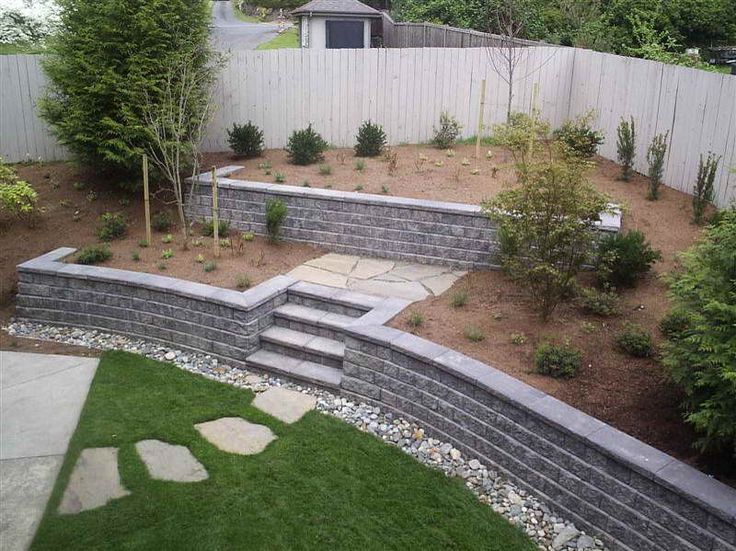
Understanding the purpose of a retaining wall and whether or not one would be beneficial to your home and landscape is more nuanced than it may at first appear. Retaining walls serve several purposes. You can use as a barrier can prevent soil erosion, use it to resolve drainage issues, or use it to inject beautiful stonework and hardscaping. Bobvilla.com has All You Need to Know About Retaining Walls for more information.
Below are four of the most common types of retaining walls with examples of when you should use it.
- Gravity Retaining Wall
This is the most basic of retaining walls and allow for the widest amount of variety when it comes to materials. Bricks, pavers, and stone are just a few options available. While shorter walls require no additional reinforcement, most will require at least a small trench to be dug for the wall to fit into, and some may require a concrete footer to sit on. It can be built in a tight area. works well in situations where you need to access utilities behind the area after the wall has been built.
They are a popular choice for residential subdivisions. In a situation where your space is limited by a steep, hilly area, the gravity wall can be used to add to the area of level ground to make it more usable. It also works well when you need to access utilities behind the area after the wall has been built. Thespruce.com has 22 Inspiring Garden Retaining Wall Ideas for inspiration.
- Cantilevered Retaining Wall
The cantilevered retaining walls makes use of a retaining wall affixed to a slab foundation that goes under the soil the wall is supporting in an “L” shape. The weight of the above soil holds the slab down so that the wall cannot tip forward. A “counter-fort” or “buttressed” retaining wall includes additional vertical wings to the foundation that provides additional strength and rigidity.
A big advantage of cantilever walls compared to other retaining wall types is that they take up little space once built and are suitable for retained heights of up to 5m.
- Sheet Piling Retaining Wall
A sheet pile retaining wall is a thin wall of steel, wood, or vinyl that is driven directly into the soil. Often these have a vertically corrugated structure to provide additional reinforcement. These pilings only work in softer soils, and a good rule of thumb is that you have to get one-third of the sheet piling driven into the ground for every two-thirds that will be above it.
This is a basic wall that is used when space is an issue. It can be as a permanent structure to protect adjoining structures. It prevents movement of the soil near a foundation, especially when weak soil is present.
- Anchored Retaining Wall
An anchored retaining wall allows for a variety of “fronts” of retaining walls to be supported by anchors driven into the earth behind them and attached by cables or strips. These anchors are usually mechanically driven into the ground and their ends expanded by injecting pressurized concrete or mechanical means. This wall can provide additional support to other types of retaining walls.
This type of retaining wall is a good choice when space is limited or a thin retaining wall is required. An anchored retaining wall is suitable for loose soil over rocks. You can construct a higher retaining wall using this type of retaining wall structure system.
Patera Landscaping has skilled estimators and installers who are trained and experienced to use the product that fits the landscape best. Let us design the right retaining wall for your landscape. Contact us today!